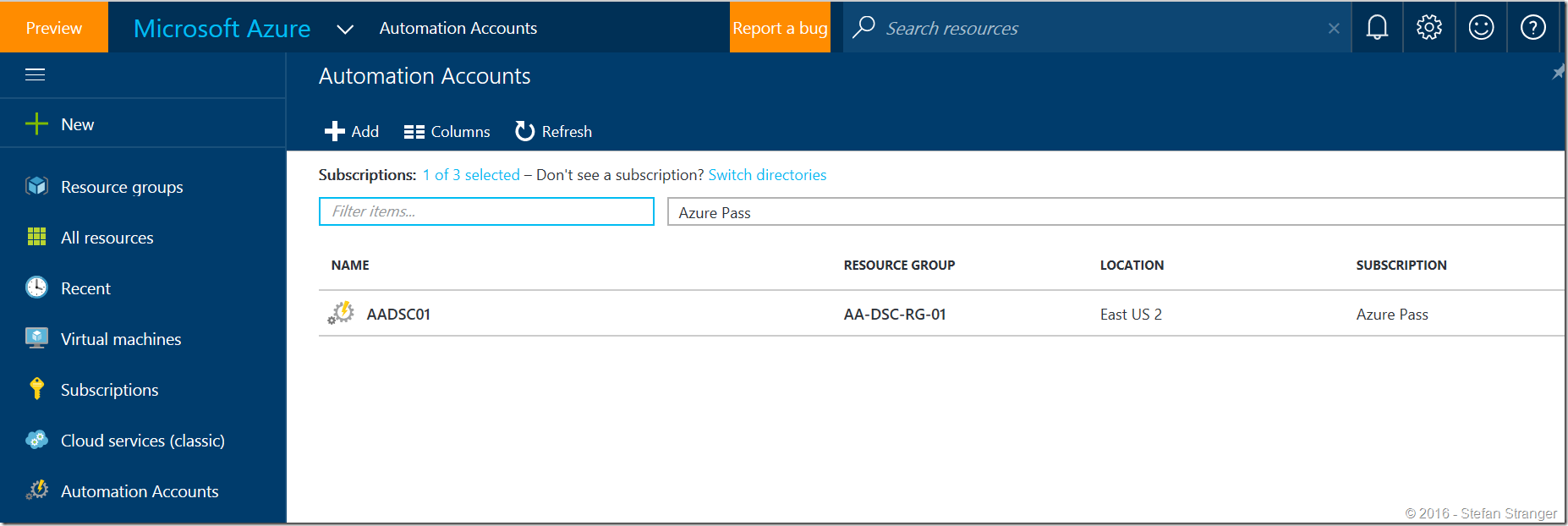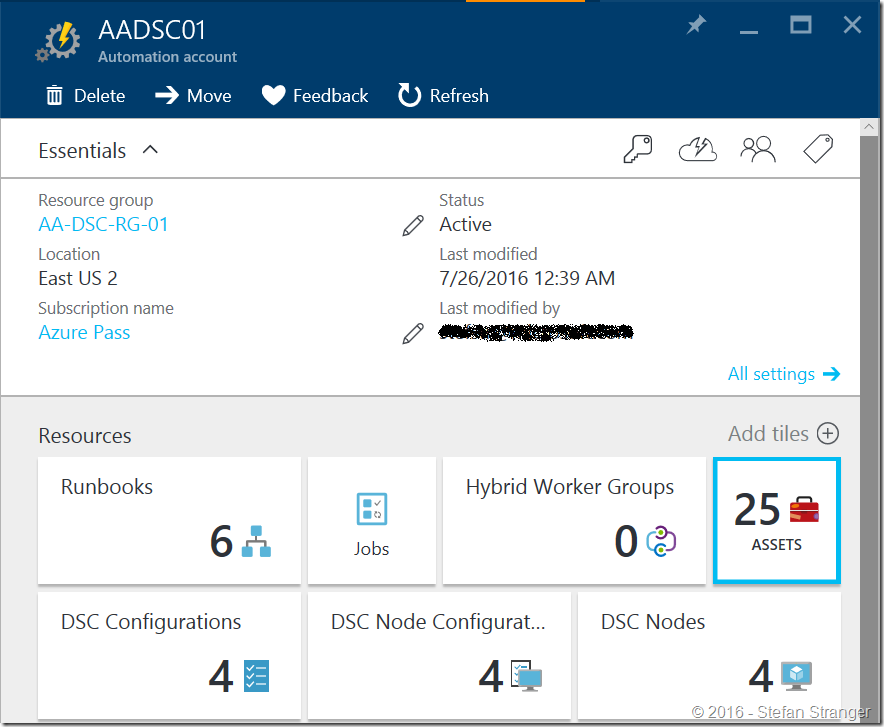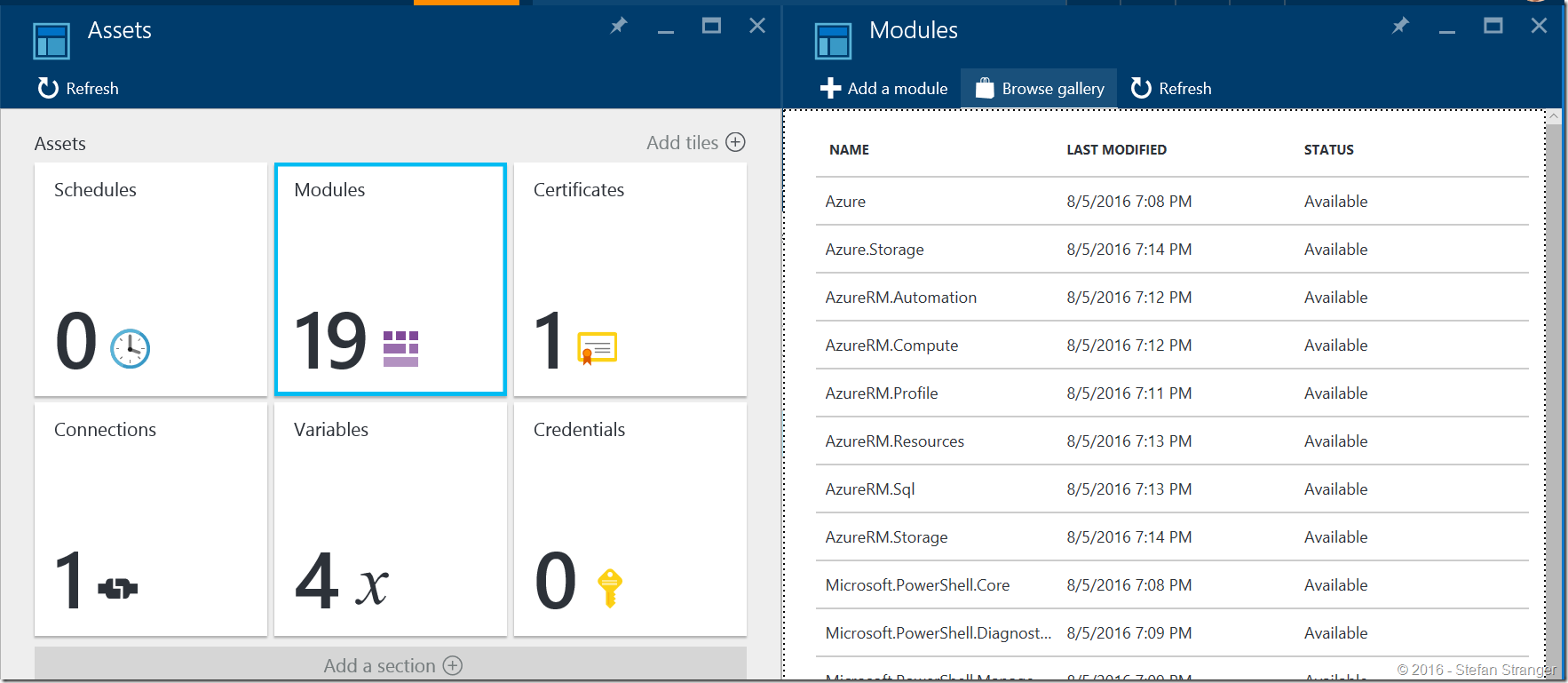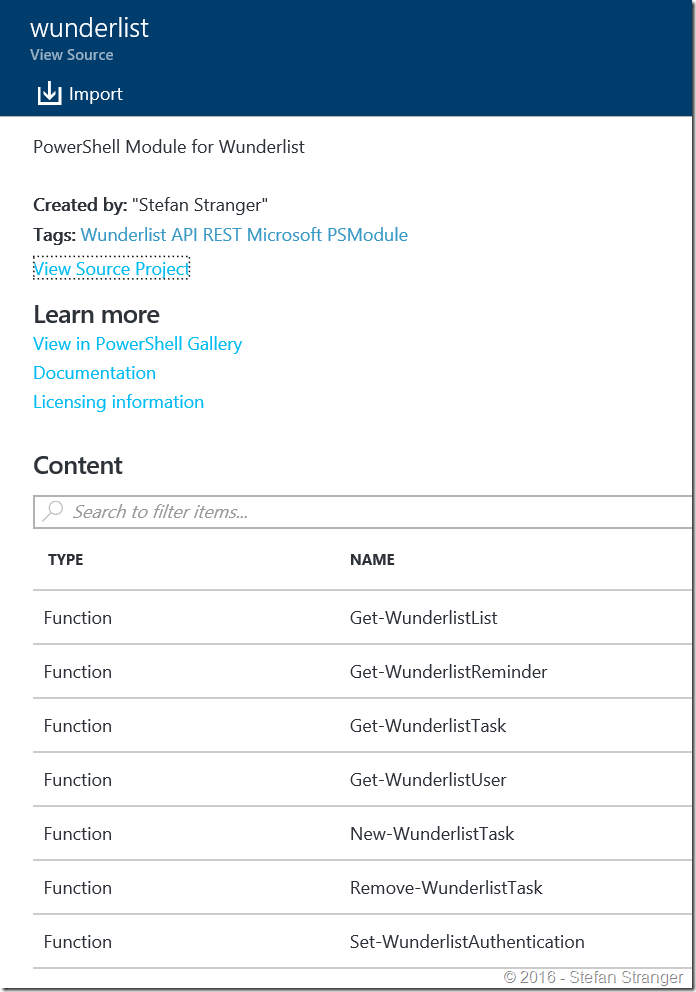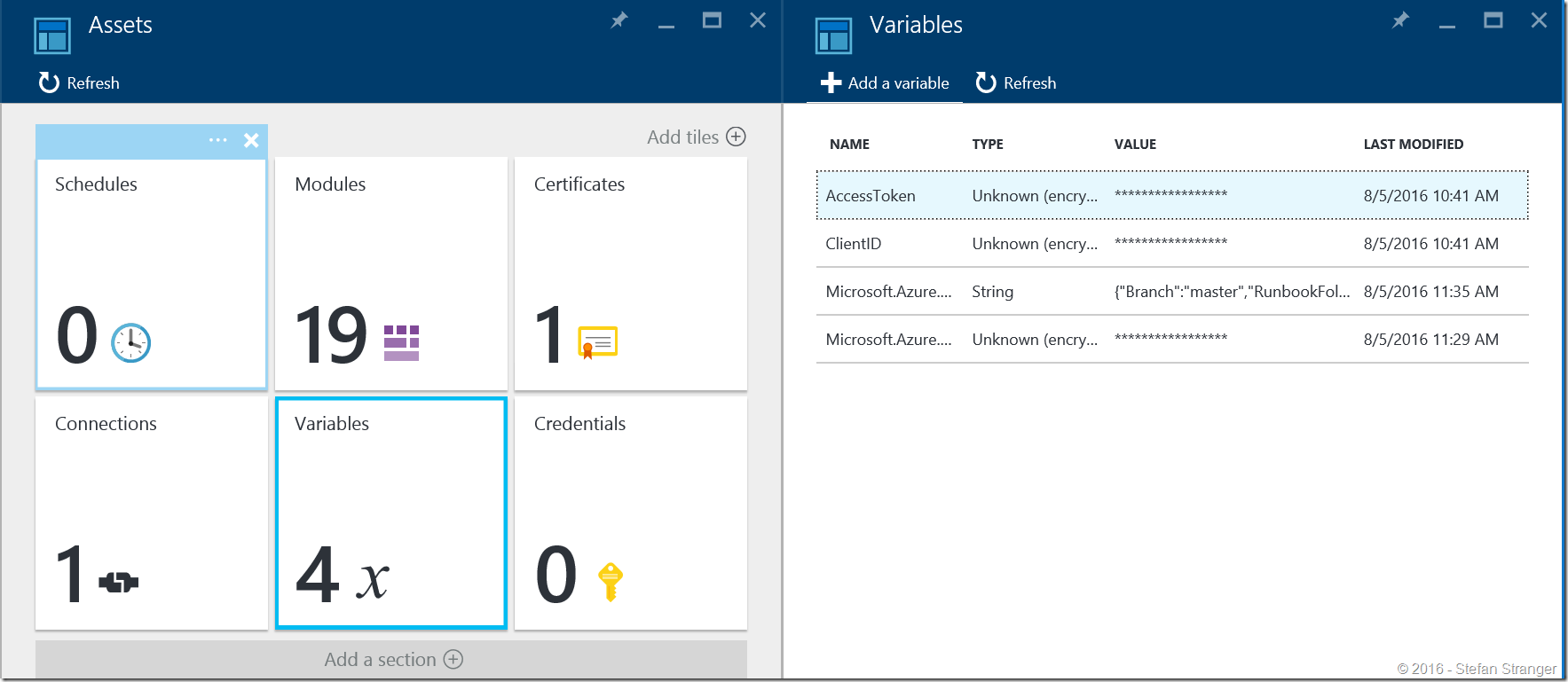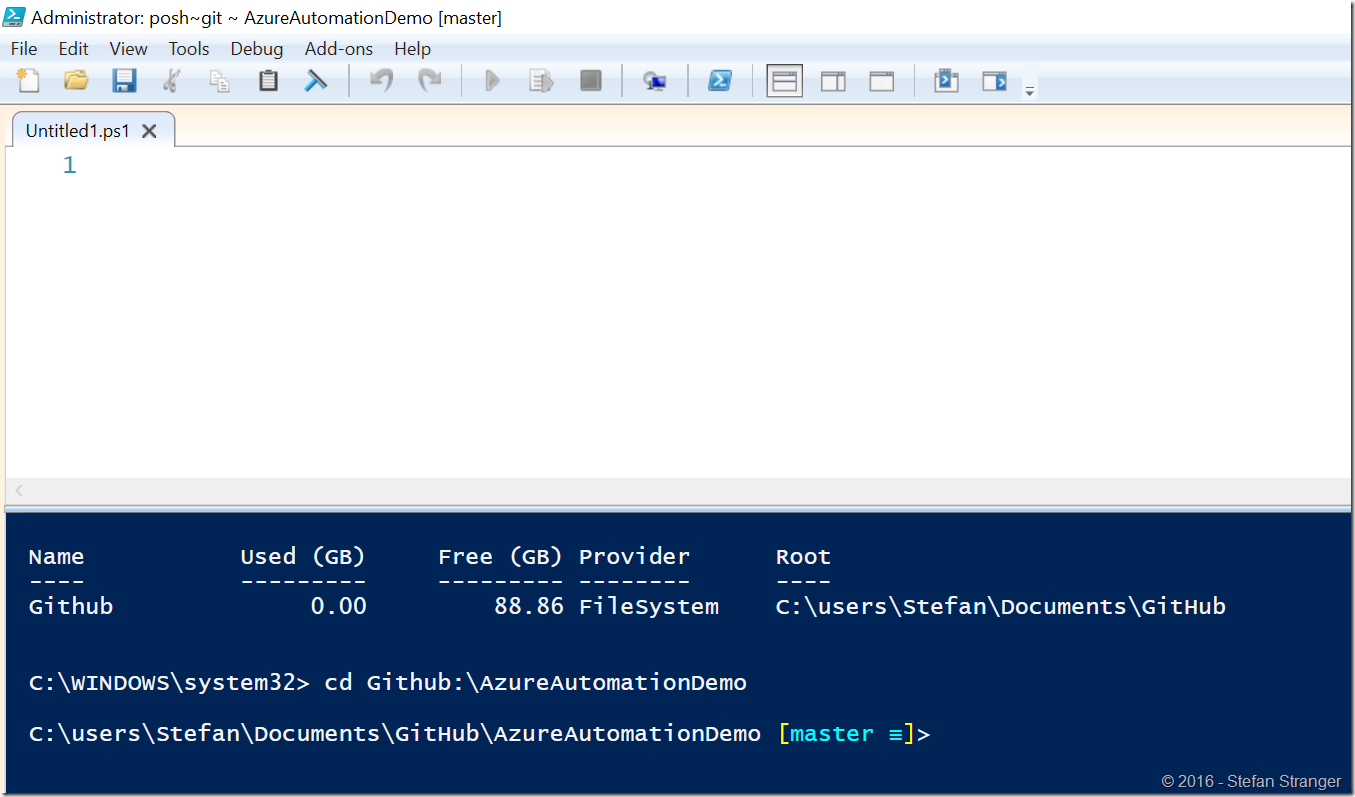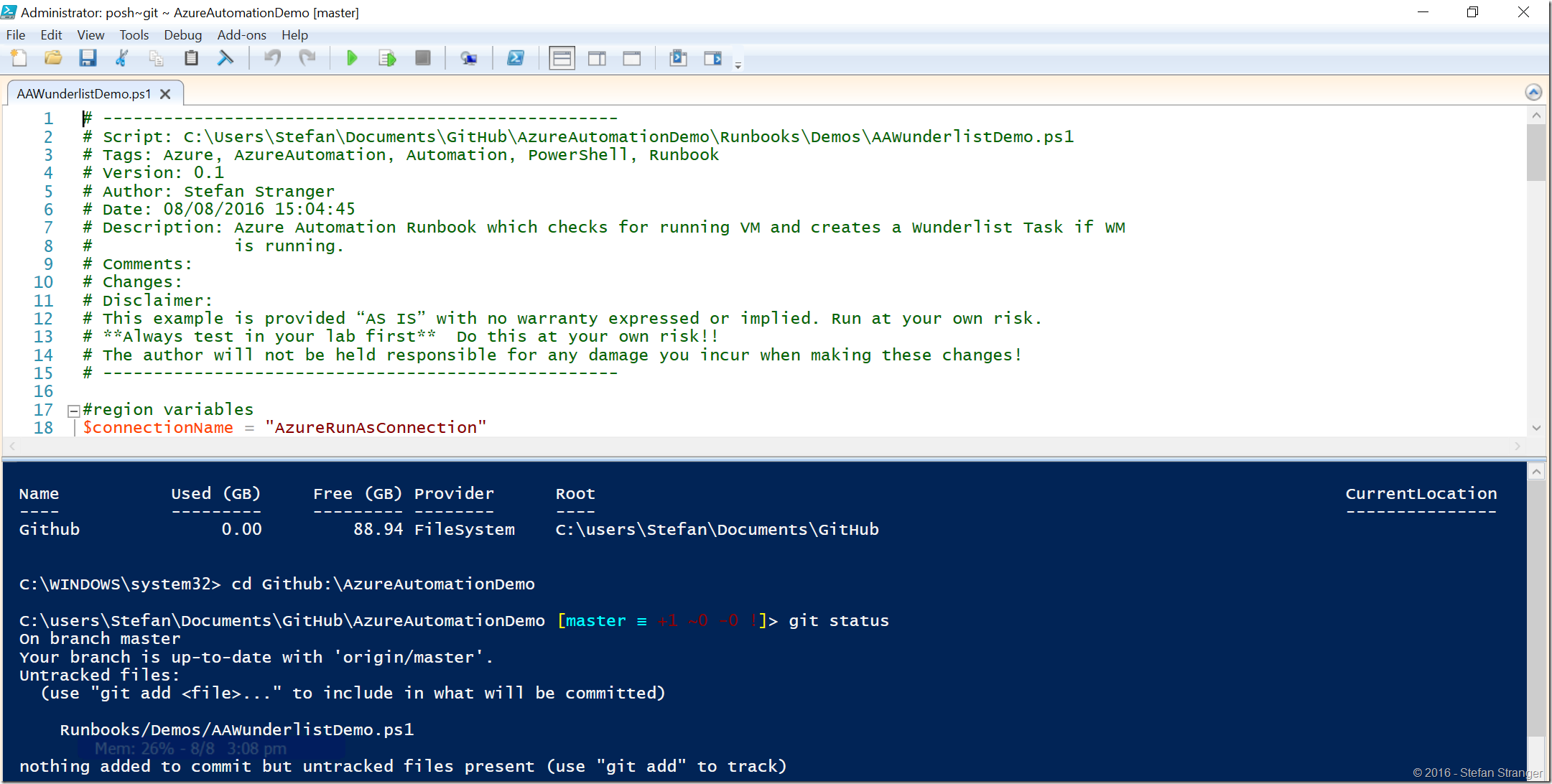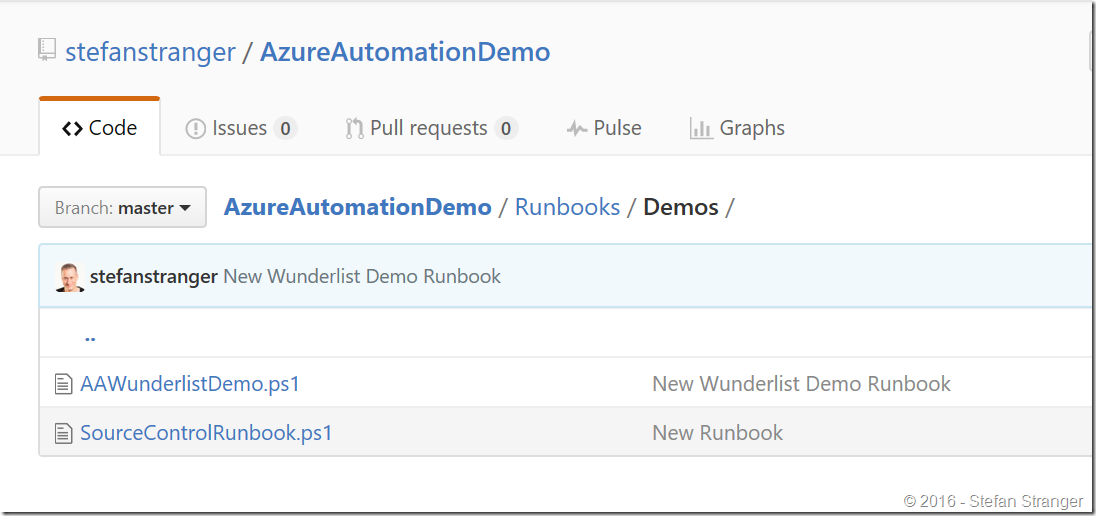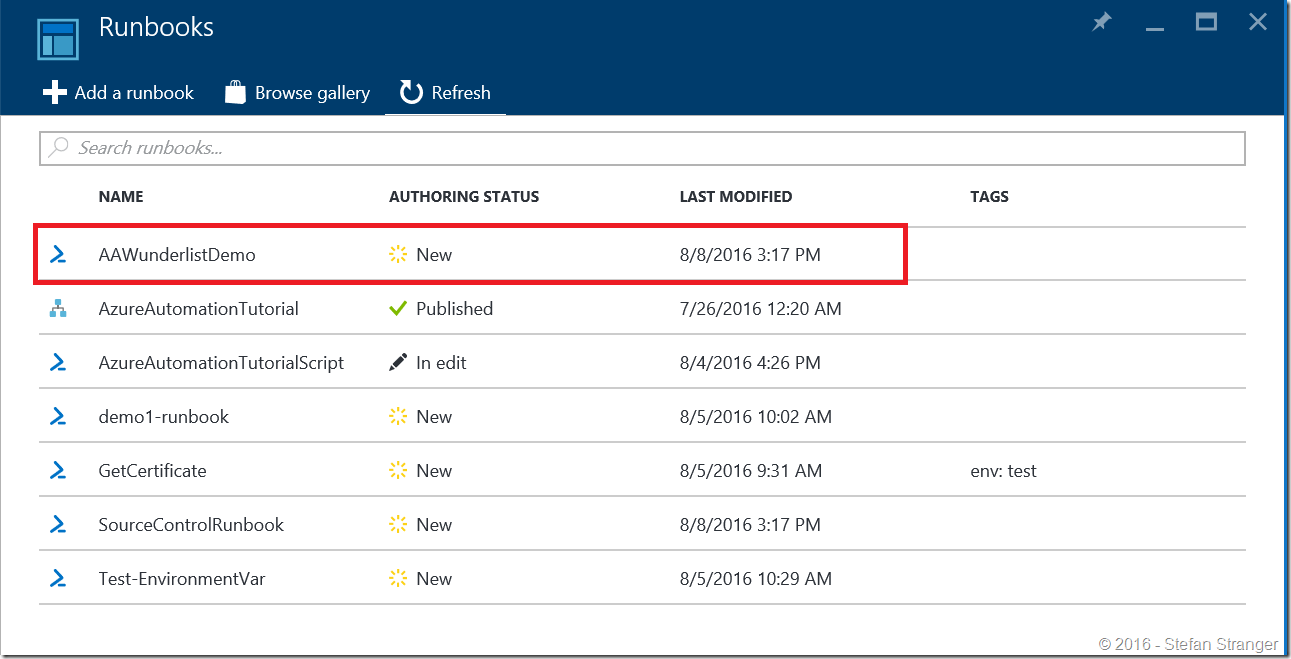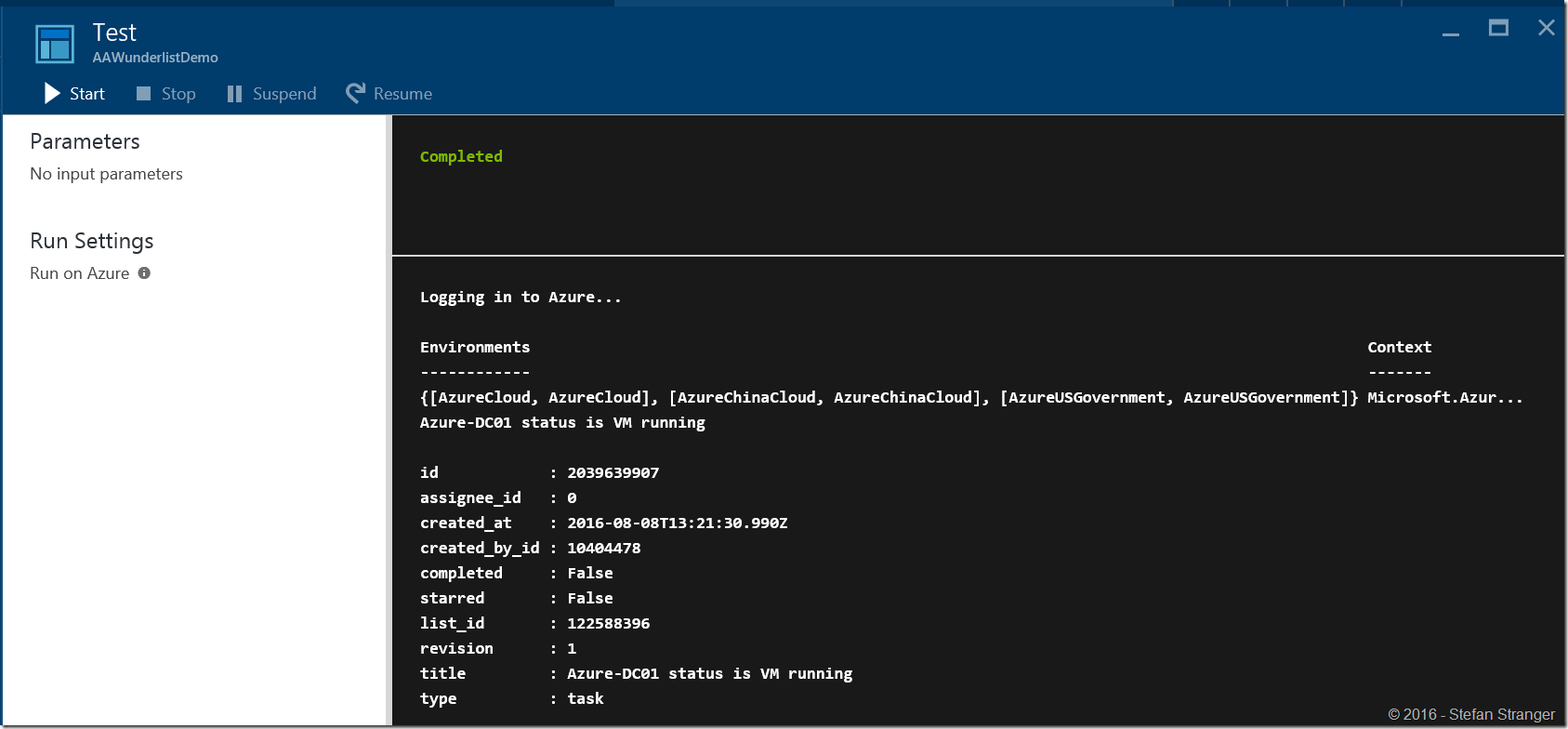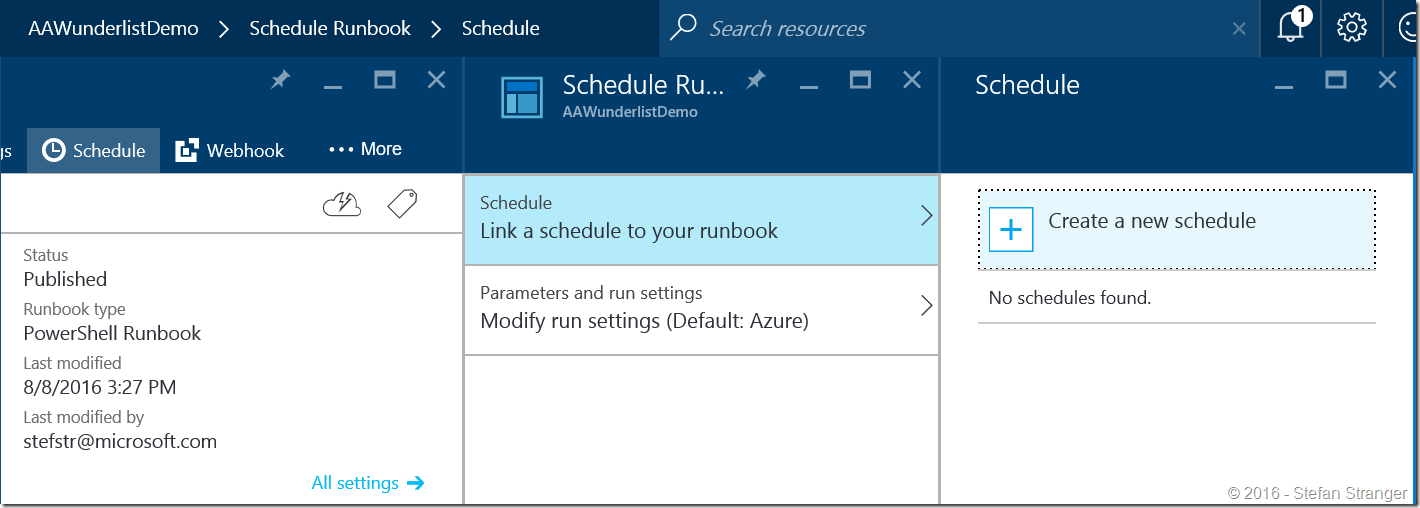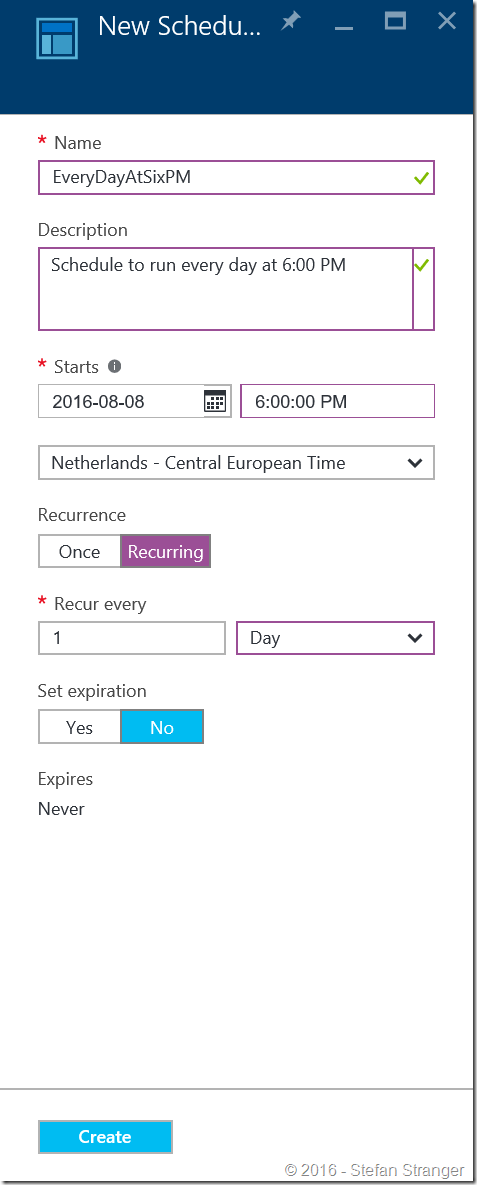Using Wunderlist Module in Azure Automation–Part 2
In the first part of this blog post series about using Using Wunderlist Module in Azure Automation I explained how to get started with the PowerShell Wunderlist Module.
Please check this blog post first if you have not done so.
In this last blog post we are going to use the PowerShell Wunderlist Module within a Runbook in Azure Automation.
Azure Automation
Microsoft Azure Automation provides a way for users to automate the manual, long-running, error-prone, and frequently repeated tasks that are commonly performed in a cloud and enterprise environment.
Configure an Azure Automation Account
Before we can start with creating Runbooks we first need to create and configure an Azure Automation Account. Follow the steps described here: https://azure.microsoft.com/en-us/documentation/articles/automation-sec-configure-azure-runas-account/ if you have not created an Azure Automation Account yet.
If everything goes well you would see something similar as this in the (new) Azure Portal.
Azure Automation Assets
If we want to start using the PowerShell Wunderlist Module we need to create a number of Assets first. Click on the Assets Icon on the Azure Portal to add the following Assets:
- PowerShell Wunderlist Module
- Secure Variables for Wunderlist ClientID and AccessToken.
Import the PowerShell Wunderlist Module from the PowerShell Gallery.
Select Browse Gallery and search for the Wunderlist Module and Import the Module.
Configure the ClientID and AccessToken secure variables.
The PowerShell Wunderlist Module needs two variables to be configured. If you have already configured the PowerShell Wunderlist Module locally you can easily retrieve these values from there if you have not saved them already earlier.
Open PowerShell Console and import the Wunderlist module and run one of the Wunderlist Commands.
[sourcecode language='powershell' ]
Import-Module -Name Wunderlist
Get-WunderlistUser
Get-Variable -Name ClientID,AccessToken
You need to copy the values of these variables to the Azure Automation Secure Variables Assets.
Click on Add a variable in the Assets section.
Make sure you create two new Secure Variables called AccessToken and ClientID and store the values from your local PowerShell session.
Create a Wunderlist Runbook
We now have all prerequisites ready for creating a new Wunderlist Runbook. If you want to implement Source Control for Azure Automation Runbooks please take a look at the following blog post: https://blogs.technet.microsoft.com/stefan_stranger/2016/08/05/setting-up-source-control-for-azure-automation/
The goal is to create a new Wunderlist Task that help us reminding to stop an Azure Virtual Machine when this is running after 6:00 PM.
Open the PowerShell ISE and navigate the Github Repository where you want to store the Runbooks.
Create the Runbook:
[sourcecode language='powershell' ]
# ---------------------------------------------------
# Script: C:\Users\Stefan\Documents\GitHub\AzureAutomationDemo\Runbooks\Demos\AAWunderlistDemo.ps1
# Tags: Azure, AzureAutomation, Automation, PowerShell, Runbook
# Version: 0.1
# Author: Stefan Stranger
# Date: 08/08/2016 15:04:45
# Description: Azure Automation Runbook which checks for running VM and creates a Wunderlist Task if WM
# is running.
# Comments:
# Changes:
# Disclaimer:
# This example is provided “AS IS” with no warranty expressed or implied. Run at your own risk.
# **Always test in your lab first** Do this at your own risk!!
# The author will not be held responsible for any damage you incur when making these changes!
# ---------------------------------------------------
#region variables
$connectionName = "AzureRunAsConnection"
$ClientID = Get-AutomationVariable -Name "ClientID"
$AccessToken = Get-AutomationVariable -Name "AccessToken"
#endregion
#The PowerShell Wunderlist Module can use environment variables as input.
$Env:ClientID = $ClientID
$Env:AccessToken = $AccessToken
#region Connect to Azure Automation Account
try
{
# Get the connection "AzureRunAsConnection "
$servicePrincipalConnection=Get-AutomationConnection -Name $connectionName
"Logging in to Azure..."
Add-AzureRmAccount `
-ServicePrincipal `
-TenantId $servicePrincipalConnection.TenantId `
-ApplicationId $servicePrincipalConnection.ApplicationId `
-CertificateThumbprint $servicePrincipalConnection.CertificateThumbprint
}
catch {
if (!$servicePrincipalConnection)
{
$ErrorMessage = "Connection $connectionName not found."
throw $ErrorMessage
} else{
Write-Error -Message $_.Exception
throw $_.Exception
}
}
#endregion
#region Check Azure VMs in Each Resource Group
$ResourceGroups = Get-AzureRmResourceGroup
foreach ($ResourceGroup in $ResourceGroups)
{
$VMs = Get-AzureRmVM -ResourceGroupName $ResourceGroup.ResourceGroupName
foreach($VM in $VMs)
{
$VMStatus = Get-AzureRmVM -Name $VM.Name -ResourceGroupName $VM.ResourceGroupName -Status
If (($VMStatus.Statuses[1].DisplayStatus) -ne "VM deallocated")
{
[string]$message = "$($vm.name)" + " status is " + "$($VMStatus.Statuses[1].DisplayStatus)"
Write-Output -InputObject $message
#Create Wunderlist task for inbox (your listid may be different!)
New-WunderlistTask -listid 122588396 -title $($message)
}
}
}
#endregion
We can now use our configured Source Control to synchronize the runbook to Azure Automation Account.
The Runbook is pushed to the remote Github Repository and will eventually show up in Azure Automation.
And after triggering a synchronization the new Runbook shows in the Azure Portal.
Let’s test the runbook.
Seems to be working ok.
And we can also check Wunderlist if this new task is being created.
Publish and Schedule Runbook
The final step is publishing and schedule the Runbook.
And now Schedule the Runbook
You can now enjoy your Wunderlist Runbook in Azure Automation. Let me know if you have some cook scenario’s to use this Wunderlist Module in Azure Automation.
